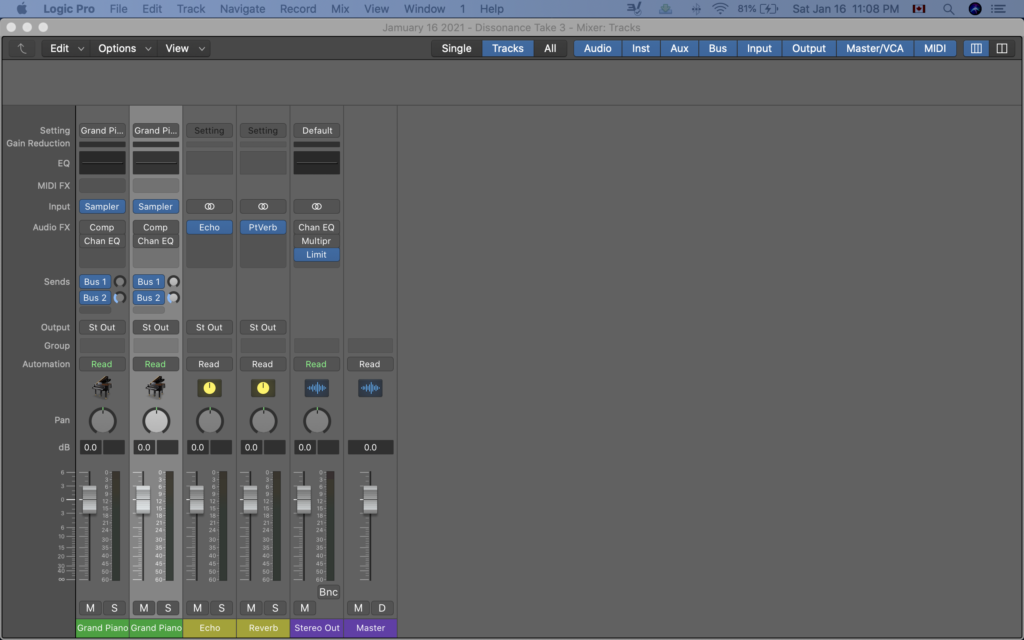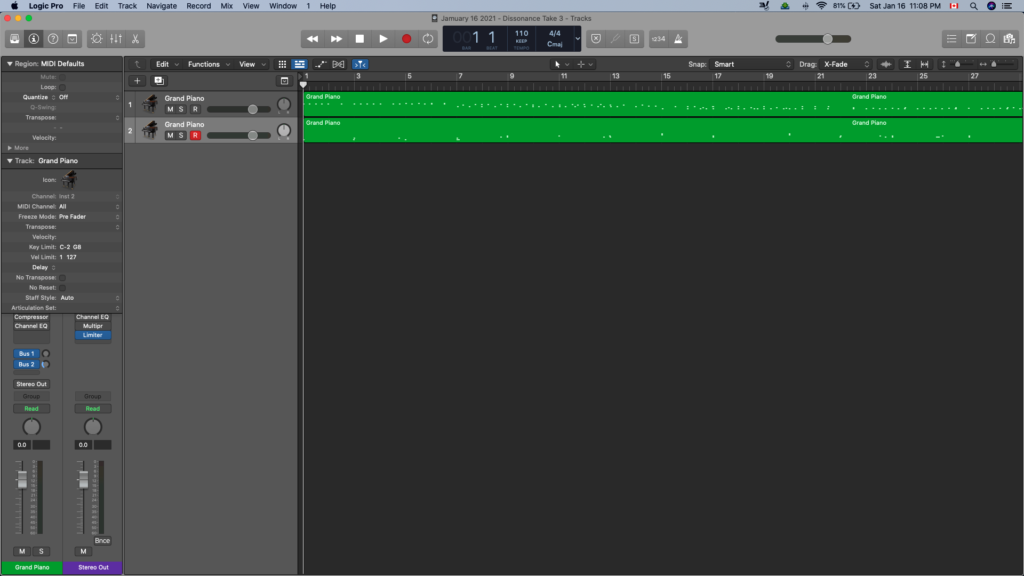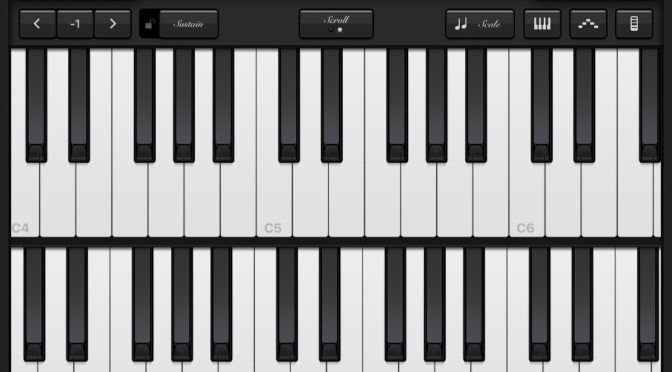This one wasn’t easy mainly because it required a lot of study on my part. I’ll confess that I didn’t really know what a dissonant chord was before starting. I knew, but I wouldn’t be able to tell anybody what they were or give examples other than to tell them, “It sounds weird, not like the other notes being played.” Which is kind of true.
This is really just me plinking away on a piano. Out of the five takes I did this one was the simplest and most clear. The others had some good ideas here and there but the theme of each take was very similar: a run up and down the octaves playing only dissonant chords.
I set up the iPad to go from C1 to C6 octaves, though with this take I had the two keyboards overlapping which is why you can hear me playing notes off of each other.
I did two run throughs for each take, first playing what I thought would be the main melody and then a second time to put down the base rhythm, often in the lower register.
It was easy to get carried away with the playing since I was just doing variations of C, F#, G and then sometimes C/D or C/C#. These are known as “dissonant” notes when played against each other. They usually create a feeling of unease int he listener but, of course, this depends completely who you are and what you grew up listening to. The easiest analogy for dissonant chords are horror film soundtracks since they make heavy use of those high-pitched, plinky-plinking notes to raise suspense before the monster or whatever is revealed. Pick a horror movie and you’ve no doubt heard dissonant notes or chords being played.
And this is what I spent most of my time learning today: which chords or note combinations would fit the challenge and which ones wouldn’t. I mean, I wasn’t going to be too hard on myself but I figured a challenge is a challenge so I should at least spend some time learning it.
The problem with dissonance is that it’s very much subjective. What one person might find uncomfortable to listen to another person would be perfectly fine with. But that’s what we hear, not necessarily what’s going on with the sounds themselves. Apparently dissonant chords have a certain wavelength that they bounce around within that hits our ear drums differently than if the notes or chords were consonant (the opposite of dissonant).
And that’s where I had to look up diagrams of dissonant notes because all that chatter had me thinking one thing: show me either the keys or the letters and I’ll figure the rest out.
I don’t think this is a track or a type of music you could listen to again and again though I can see why it’s often used in horror films and other music that tries to scare people rather than make them feel at ease.
I’m not a hardcore music theoretician so I go by what I think sounds alright. Although I’m playing very few notes throughout the track I am surprised by the variations that could be made with them. Further, I was also surprised that running up and down a few octaves took up the better part of two minutes.
I didn’t touch anything else in the editing process, opting to use the Grand Piano instrument with the sustain on the entire time.


I’ll leave it as is for now since my brain is tired from all of the theory reading. It’s also getting late in the day and I want to wrap this up already. I had to re-learn a little music theory today but was happy that I was able to read music notation, which made me laugh because so often I struggle with reading Chinese that to read notes on a scale made me briefly think about the types of writing systems we have. Then I got back to plinking away on the piano.
